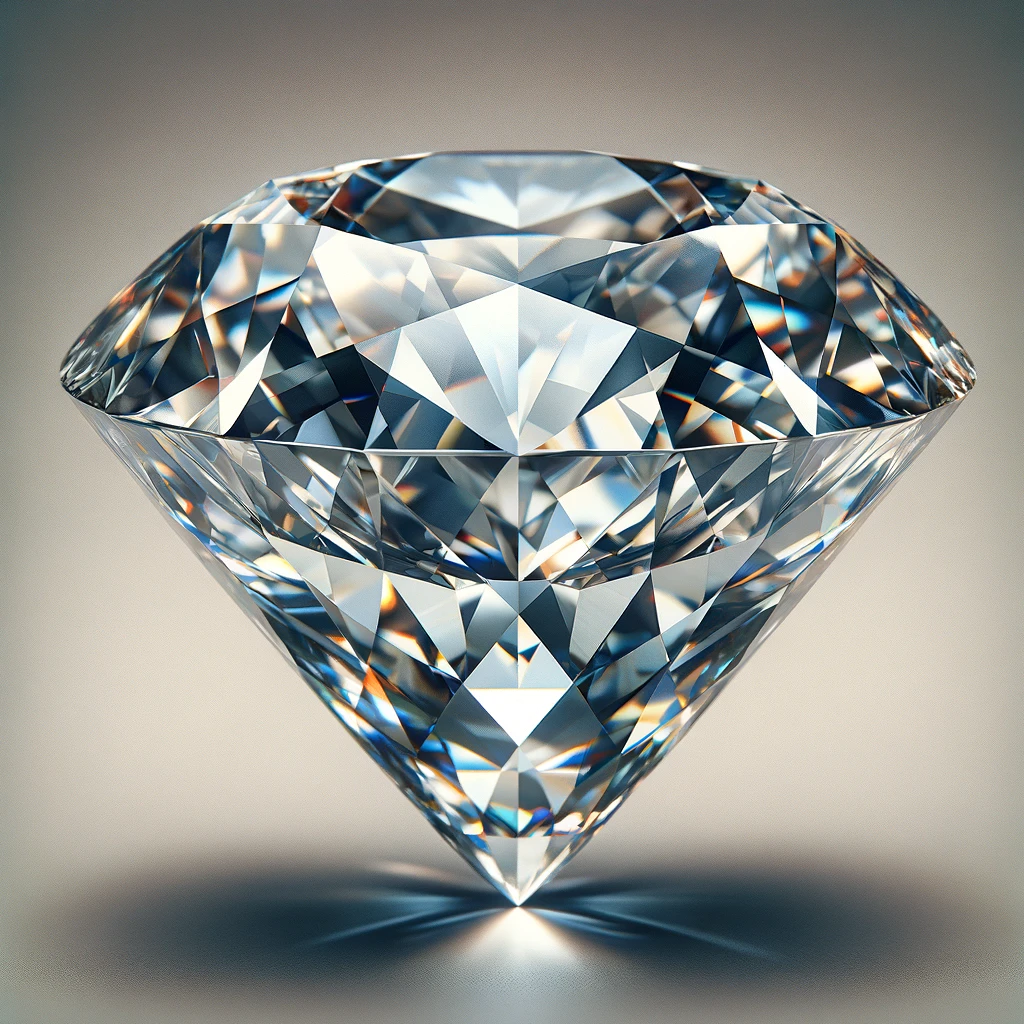Introduction to Natural Diamonds
Natural Diamonds are among the most treasured and fascinating gemstones in the world. Known for their incredible hardness, brilliant sparkle, and timeless appeal, diamonds have captivated people’s hearts and minds for centuries. Whether featured in stunning jewelry or used in high-tech industrial tools, diamonds possess unique qualities that make them stand out from other minerals.
What Are Diamonds?
At their core, diamonds are made of carbon, the same element in common items like graphite and coal. However, what makes diamonds special is their crystal structure. Carbon atoms in diamonds are arranged uniquely, creating a three-dimensional lattice that gives diamonds their unmatched hardness. This structure makes diamonds the hardest natural material on Earth, capable of lasting for generations without losing their beauty.
How Are Diamonds Formed?
Diamonds are formed deep within the Earth’s mantle under extreme pressure and high temperatures. This process takes millions to billions of years. Volcanic eruptions bring these raw diamonds closer to the Earth’s surface, where they can be mined. In addition to natural diamonds, scientists have developed methods to create synthetic diamonds in laboratories. These lab-grown diamonds have the same properties as natural diamonds and are made by replicating the conditions under which natural diamonds form.
Uses of Diamonds
While diamonds are best known for their role in beautiful jewelry, they are also instrumental in other fields:
- Jewelry: Diamonds are commonly used in rings, necklaces, earrings, and bracelets. Their sparkle and durability make them perfect for pieces meant to be cherished for a lifetime.
- Industrial Tools: Due to their hardness, diamonds are used in cutting, grinding, and drilling tools. They can cut through other hard materials with ease.
- Electronics: Diamonds are excellent conductors of heat, making them valuable in high-performance electronic devices to help manage heat.
Why Are Natural Diamonds Valuable?
Diamonds are often seen as symbols of love and commitment, especially in engagement rings and wedding bands. The value of a diamond is determined by the “Four Cs”:
- Carat: This measures the weight of the diamond. Larger diamonds are rarer and generally more valuable.
- Cut: This refers to how well the diamond has been shaped and faceted. A good cut enhances the diamond’s ability to reflect light and sparkle.
- Color: Diamonds come in various colors. The most valuable diamonds are usually colorless, but rare colors like blue, pink, and green can be even more precious.
- Clarity: This measures the presence of imperfections inside or on the surface of the diamond. Diamonds with fewer imperfections are more valuable.
Ethical Considerations
The diamond industry has faced challenges related to ethical sourcing. Some diamonds, known as conflict diamonds, are mined in war zones and sold to finance conflicts. To address these issues, the Kimberley Process Certification Scheme was established. This process ensures that diamonds are mined and sold ethically without contributing to violence.
Conclusion
Diamonds are more than just beautiful stones; they are a testament to the wonders of nature and human innovation. Their unique properties and wide range of uses make them highly valued in personal and industrial contexts. Diamonds hold a special place in our world, whether symbolizing eternal love or driving technological advancements.
If anyone wants to buy Certified and Natural Diamonds, please get in touch with us…
Frequently Asked Questions About Diamonds
1. What are diamonds made of?
Diamonds are made of carbon atoms arranged in a crystal lattice structure. This unique arrangement gives diamonds their exceptional hardness and brilliance.
2. How are diamonds formed?
Diamonds form deep within the Earth’s mantle under extreme pressure and high temperatures over millions to billions of years. Volcanic eruptions bring these diamonds closer to the Earth’s surface, where they can be mined.
3. What are synthetic diamonds?
Synthetic diamonds, also known as lab-grown diamonds, are created in laboratories by replicating the high-pressure, high-temperature conditions under which natural diamonds form. They have the same physical, chemical, and optical properties as natural diamonds.
4. What are the “Four Cs” of diamonds?
The “Four Cs” refer to Carat (weight), Cut (quality of the shape and facets), Color (hue and tone), and Clarity (presence of imperfections). These factors determine a diamond’s value and quality.
5. What are conflict diamonds?
Conflict diamonds, also known as blood diamonds, are diamonds mined in war zones and sold to finance armed conflict. The Kimberley Process Certification Scheme aims to prevent the trade of these unethical diamonds.
6. How are diamonds used in industry?
Due to their hardness, diamonds are used in cutting, grinding, and drilling tools. They are also valued in electronics for their excellent thermal conductivity.
7. Can diamonds be used in electronics?
Yes, diamonds are used in electronics due to their superior thermal conductivity, which helps manage heat in high-performance electronic devices.
8. Why are diamonds so valuable?
Diamonds are valuable due to their rarity, beauty, and the complex process required to bring them from deep within the Earth to the surface. The “Four Cs” (Carat, Cut, Color, and Clarity) also significantly influence their value.
9. How can you tell if a diamond is real?
A real diamond will have specific properties such as hardness, high refractive index, and thermal conductivity. Professional jewelers can use specialized tools to determine the authenticity of a diamond.
10. Are lab-grown diamonds as valuable as natural diamonds?
Lab-grown diamonds have the same physical properties as natural diamonds but are generally less expensive due to their more abundant supply and shorter creation time. Their value can vary based on market demand and personal preference.
11. What should I consider when buying a diamond?
When buying a diamond, consider the “Four Cs” (Carat, Cut, Color, and Clarity), the jeweler’s reputation, and whether the diamond has been ethically sourced.
12. How do I care for my diamond jewelry?
To care for diamond jewelry, clean it regularly with mild soap and water, avoid harsh chemicals, and store it separately to prevent scratches. Regular professional cleanings can also help maintain its brilliance.

